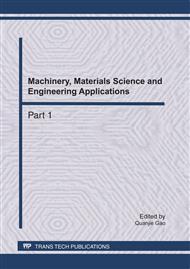p.817
p.822
p.828
p.832
p.836
p.841
p.847
p.853
p.858
Study on Blasting Driving Roadway Single Transformation Ejector Auxiliary Ventilation
Abstract:
Faced with the serious pollution problems of blasting smoke after blasting with the ventilation method based on pressure, using single transformation ejector auxiliary ventilation was raised in the paper, namely ventilation based on pressure was put into use when it was normal, but ejector auxiliary ventilation was used after blasting. The simulation of the condition by fluid analysis software when ejector auxiliary ventilation and ventilation method based on pressure were conducted, and a inclusion was presented that ejector auxiliary ventilation had a good effect on exhausting smoke for the long tunnel with small section, and it has an advantage of shortening exhausting smoke time and less pollution to the roadway, Ventilation can be divided into two phases, when the ejector inlet is submerged in the smoke, smoke is suck out mainly through ventiduct. when the ejector inlet is exposed to fresh air flow, the ejetor assist smoke get out through ventiduct.
Info:
Periodical:
Pages:
836-840
Citation:
Online since:
April 2011
Authors:
Keywords:
Price:
Сopyright:
© 2011 Trans Tech Publications Ltd. All Rights Reserved
Share:
Citation:


